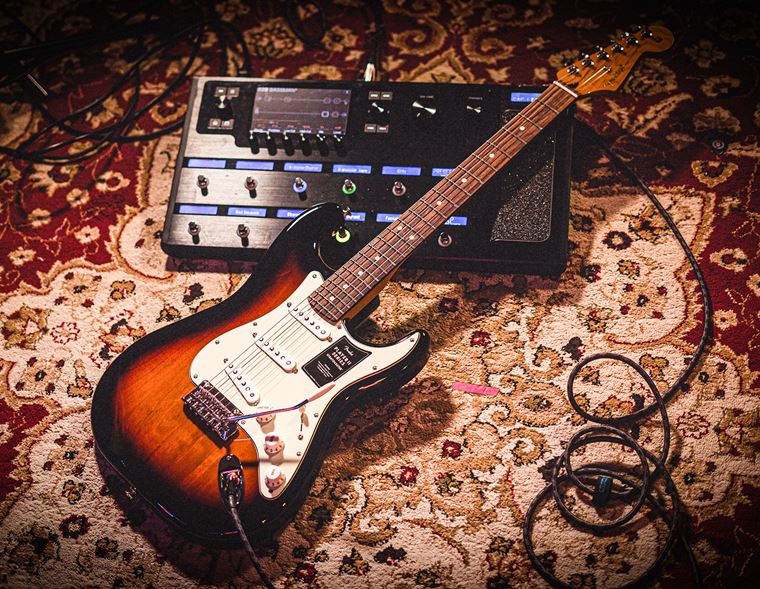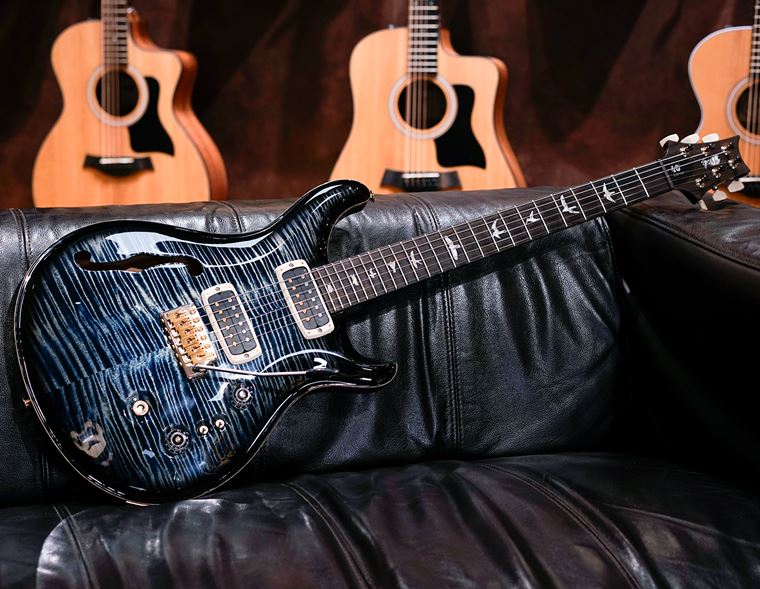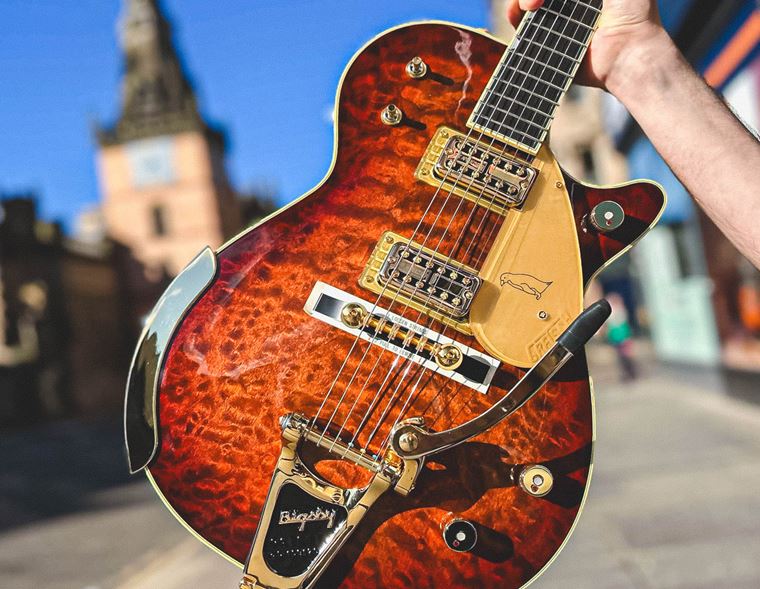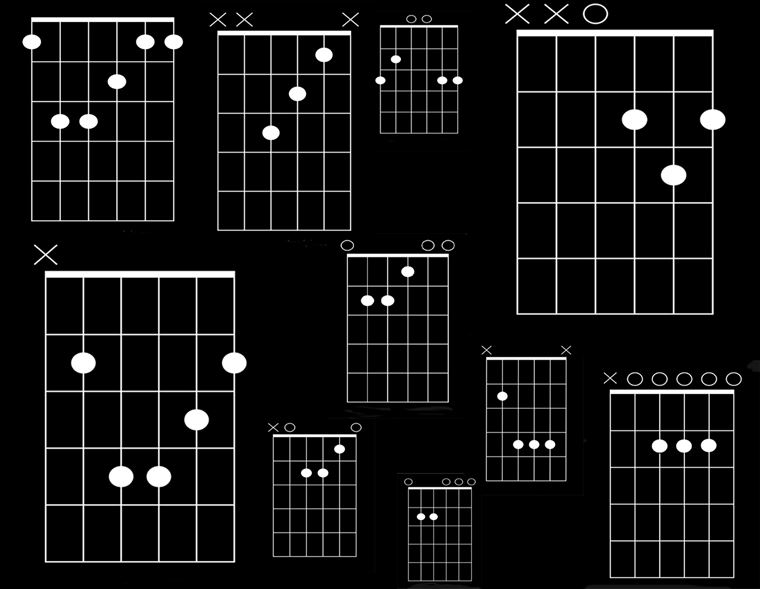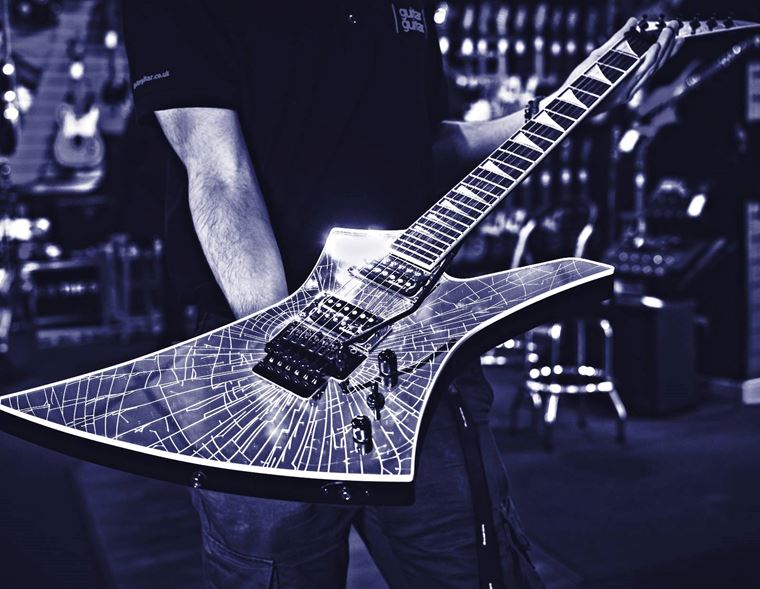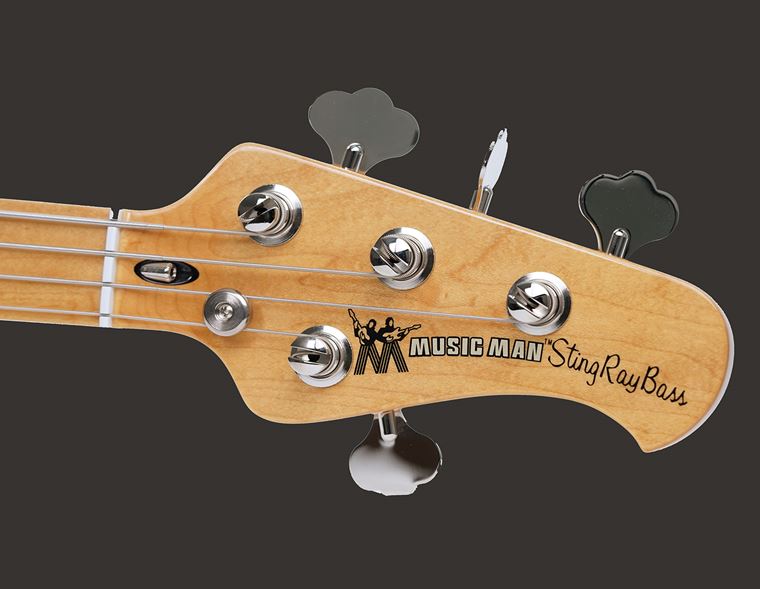Top Ten METALLICA Riffs
Published on 06 August 2021
The ‘Best Right Arm in Rock’.
That’s what they call James Hetfield, leader, singer and riffmeister for Metallica. They’re not wrong, whoever ‘they’ are: Metallica’s stupendously effective riffs are at least 60% of the reason why they’ve been the biggest metal band in the world for over 30 years. True, they write great songs and have an extremely influential sound and look, but it’s those riffs – a mixture of machine-like jackhammering and exotic melodicism – that put the Bay Area rockers on the map.
This month, their commercial apex, The Black Album, turns 30. It’s hardly aged at all! The Black Album (actually just called Metallica but that’s a semantic nightmare) was packed with some of the band’s best ever songwriting. The deadly riffing was still there – bigger than ever in some cases – but it was blended with more dynamics and more diversity than we’d hitherto heard from the band. Songs like The Unforgiven took Metallica’s balladry into an altogether more widescreen place, whilst cuts like Sad But True and Of Wolf and Man showed how much heavier they could crush things when they actually slowed the tempo.
It was a revelation, and is by far Metallica’s best-selling and most well-known album. We still think that the epoch-defining crunch from Hetfield and Hammett’s ESP guitars on this record is the standard by which all high-gain guitar tones have been measured since. Certainly, it’s influence can be heard on the majority of metal albums released to this day. Like Back in Black and Led Zep IV, it’s just one of those albums that’s familiar to a high percentage of music fans and loved by millions.
Top Ten Metallica Riffs
To help celebrate all things Metallica, we thought we’d gather together ten of their meanest, most diabolical and crushingly heavy riffs ever. This is from Metallica’s entire 40+ year career, and it’s been a tough one! Nearly all of their riffs are at least ‘very good’, so selecting the ten best is a pretty impossible task. That said, it’s also an excellent excuse to enjoy some triple-A riffing from San Francisco’s finest, so let’s do this!
Eye of the Beholder
Let’s start off with this deep cut from 1988’s ...And Justice For All album. For many fans, Justice is the best Metallica album once you’ve gotten familiar with the Black Album. Stuffed with genre-topping riffs (most songs have at least three belters) and famous for its ‘no bass’ mix, Justice is the sound of Metallica laying down the definitive sound of Bay-area thrash.
Eye of the Beholder, a firm live favourite for many years, shows just how much mileage Hetfield can get from a simple E5 power chord. It’s easy to play but the genius is in writing it in the first place, right? Then riff then opens out into it’s distinctive flattened 5th motif that seals the deal.
Creeping Death
Whilst we’re on the subject of maximising the humble E5 power chord, this glorious cut from 1984’s Ride the Lightning is what thrash metal is all about. After a bombastic intro, a single crunchy guitar rattles out a machine gun of a riff, filled with kinetic pre-mosh energy. The band joins a few bars in, cementing the notion in every metal fan’s mind that Metallica can out-riff pretty much everyone.
When trying to play this one, its downstrokes ONLY: up and down just doesn’t sound right, or help with your technique. This is a tricky riff to master (harder than it sounds by quite a margin) and messing up that right hand muting will throw your rhythm right out, so make sure you start slow and build up your ‘Hets’ (right arm guitar playing muscles, okay?) before attempting this one at full velocity.
Master of Puppets
Once you’ve sufficiently built up those Het muscles (yes, we invented that term), it’s time to attempt a thrash rite of passage: the punishingly fast Master of Puppets riff. Taken at face value, this descending chromatic chunk of riffery doesn’t sound too taxing, but apply the Hetfield rule of DOWNSTROKES ONLY, and you’re entering a world of hurt. Many, throughout the years, have tried and failed at this one, and when they do it in guitar stores, the shame is palpable. Practise it at home and keep that right hand relaxed as you play. You’ll get there!
This classic Metallica riff, from the 1986 album of the same name, uses almost every note in the E chromatic scale as it descends furiously down the neck. Only the low F is spared a battering this time round, though Metallica fans will know that the E to F chord change occurs in rather a few of their other tunes!
Rest assured, if you can play this riff cleanly and up to speed, using downstrokes only, you are awesome. Now, sit down and take a break: you’ve earned it.
Through the Never
This deep cut from the Black Album is one of the most mosh-friendly tunes Metallica have written, and that’s saying something! Nestled in on what was once known as ‘side 2’ of the record, Through the Never unleashes a savage, non-stop intro riff before bringing a ‘proper Metallica groove’ during the verses. Despite it being catchy as hell, it’s also superbly heavy, perhaps summing up Metallica’s enduring popularity right there? Heaviness and catchiness is a potent mix for sure.
As usual with these guys, where you find one solid gold riff, you’ll usually find another close by. In this song’s case, it’s a mid-song mood change that heralds a slower and altogether meaner mosh-response from the faithful in the audience. Underrated!
Harvester of Sorrow
James Hetfield must laugh when he hears about other musicians struggling to come up with enough good riffs for a record. Justice has an entire career’s worth of great riffs in one album, and Harvester of Sorrow has most of them in just the one tune! The attitude on this song is immense: the tempo and the syncopation that come so easily to Metallica are just a few of the elements that differentiate them from other thrash bands, and elevate ‘good’ into ‘great’.
What is a ‘Harvester of Sorrow’? Don’t care, listen to them riffs! The clean riff (Papa Het favoured a Roland Jazz Chorus JC-120 for his clean tones) has a distinctly exotic vibe, without drifting into the iffy waters of cheeseball holiday music. Once the heaviness kicks in, Metallica do a thing that not many bands bother doing: they switch up the riff for something else. You do get a variation on the intro riff, but it gets swiftly dropped in favour of a completely new riff, which develops the song and provides a better platform for quality headbanging. As we say, Hetfield seems to have an inexhaustible stockpile of memorable riffs, and this song is a real highlight on an album that has a great many of them. Chhhyeah!
The Outlaw Torn
Whilst it’s fair comment that Metallica’s post-Black Album records have been less filled with classics than those that came before, there’s still gold to be found for those intrepid prospectors venturing into the likes of 1996’s Load record. Our pick today is the final track, and takes us very much into ‘epic’ territory.
Have you ever felt like there was a bit of a Wild West vibe to certain Metallica songs? If so, this is where it all comes together, particularly if you listen to the live S&M version featuring a full-on cinematic orchestra. The Outlaw Torn is a huge, brooding beast with a blunt, staggering intro that opens out into a grand canyon-sized riff full of drama and portent. Hetfield’s soaring vocal evokes a widescreen sense of epic emotion, furthering the ‘frontier’ vibe and providing the band with one of their most underrated songs. Extra points are awarded to Hammett for his deliciously atonal slide solo towards the end of the studio version: talk about making a guitar scream?
The Thing That Should Not Be
Someone in Metallica is a horror fan. We expect that it might be Kirk, given the evidence displayed on his numerous custom Mummy/Nosferatu/Ouija ESP guitars, but whomever it is, the influence is strong in songs like Call of Ktulu (based on an HP Lovecraft short story) and Of Wolf and Man (inspired by risible werewolf flick Wolfen).
Having said all that, the closest they ever got to actually sounding like an abominable monster is this tune, from Master of Puppets. It’s moody, dark and slimy, inhabiting some misty swamp and crawling with its many legs through the mud. Well, it sounds like that to us, anyway, especially when that riff drops in and the floor falls out from under you at around 1m 49secs. Hunter of the shadows indeed! Great drama, added by using drop D tuning but holding back on the low D until this point in the tune. It’s just one heavier, right?
Sad But True
Metallica’s heaviest riff? We’re not sure, but Hetfield himself always remarks on it before they launch into it live, and we’re not about to start arguing with him!
As with The Thing That Should Not Be, Sad But True garners it’s fierceness from its relative lack of pace: this thing is a giant monolith of a riff, stomping on everything in its path. Huge breezeblocks of notes drop on you from a great height, grinding and squashing you flat as it moves on.
The tone on this song is monstrous, and that’s partly down to the tuning (D standard, folks, so a whole step lower than they usually went at this point), the gear (ESP and Mesa/Boogie to the max) and partly down to leaving as many gaps of silence in the riff as there are notes. This aint thrash: this is something altogether more sinister.
Fun fact: Hetfield actually overdubbed the palm-muted bits on extra tracks to toughen them up even further. Good lad.
For Whom the Bell Tolls
A great metal song needs a great intro, and intros are definitely one of Metallica’s strong suits. This fan favourite from Ride the Lightning displays the band’s understanding of explosive dynamics, as well as giving the late, great Cliff Burton a platform for his brilliantly unorthodox bass playing.
Then, of course, this being Metallica, we are treated to not one but two brilliantly pummelling riffs: the song’s signature descending mosh-moment and then the brutal main riff, which comes back again in the chorus. These guys make this stuff seem effortless.
Enter Sandman
Pretend you’ve never heard this song 3000 times before. Try instead to go to it with fresh ears: take in that creepy clean intro, the toms building, the little wah-wah part...then feel the thrill of the Most Copied Heavy Guitar Tone in the World ™ announcing one of the world’s truly great riff build ups. They really milk it for drama, and boy, does it work. When Sandman kicks in, it’s such a gratifying sound that we almost take it for granted these days. Where would heavy music be without Enter Sandman? The riff’s awesome but it’s the arrangement that elevates it here.
The greatest part about the Enter Sandman riff is obviously the fact that, near the end, the band evidently decided that the riff needed to smash back in again, just to give ‘em all another go at it! Everyone loves a break in a song where the guitar riff is left to go for it alone, and this one is one of the best. Enter Sandman is deservedly the best known Metallica song in the world, and Kirk’s riff (yet, this one aint James!) is a huge part of the reason. Hats off chaps.
The View (with Lou Reed)
Only kidding!
Masters of Riffage
Metallica are undoubtedly the masters of post-Sabbath riffing. Between them and, to a lesser extent Pantera, no other band has influenced so many of those who’ve followed. Though a few of their riffs (Sandman is an obviously one, as are a few of their patchier later offerings) owe an obvious debt to the blues, it’s their exploring of other more esoteric avenues that seems to have brought them to their iconic sound. As we’ve seen, Metallica get a huge amount of mileage from relatively simple riffs, their effectiveness balancing more on rhythmic invention and catchiness than relying ability or technique alone. They use chromatic scales and semitones a lot, further taking them away from well-worn shapes and inventing new languages to use on the instrument.
You can’t be a bad guitarist and play Metallica tunes, but by that same token, it’s important not to overthink it: most of their signature groove and swagger seems to be based on feel, and for that, they have very few worthy competitors.
So, what did you think of our list? Where are all the songs from (fill in blank here)? Well, as we said before, Metallica have an almost laughably high amount of excellent riffs in their catalogue, so we could easily have stuck Orion in there, or St Anger (calm down, we just mean the riff, not the song!) but we only had ten spots. Many masterpieces were left out. Tell us which! What didn’t we include?
Thanks for coming with us on this journey today. The Black Album is 30 years old and sounds as enormous and thrilling as ever. If you’re anything like us, you’ll now be itching to pick up a guitar and blast some Metallica riffs for yourself. Raise your salute to the gods of rock and unleash the fury!
See you next time
Ray McClelland

